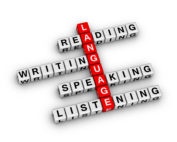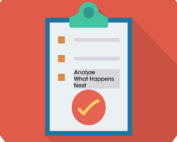What is Learnership?
Learnership combines the words and meanings of the words “learner” and “ownership.” Together, they embody the elevation of learning to learner ownership. Someone who has true learnership is one who self-directs, self-evaluates, self-reflects, and self-controls their own learning. We are posting new articles every week so make it your routine to check-in frequently. Or, subscribe to The Learnership Review and receive monthly emails so you never miss a thing.
How to Utilize the Correlations Between the Strands of Literacy to Support Integration, Conceptual Redundancy, and Mastery
In this article you will learn…
- The standards clearly articulate a shared responsibility for literacy development and were designed with embedded correlations that support conceptual redundancy, reciprocity, and integration.
- The reading and writing standards are correlated by skills between reading type and content area.
- The standards are designed with correlations that lead to integration of standards across literacy strands and content areas.
How to Determine Measurable and Achievable Skills within the Standards
In this article you will learn…
- The standards define end-of-year expectations, but each one is too complex to be taught—and mastered—in one lesson and must be broken down into distinct skills.
- There is a pattern to every standard and when you understand it you can easily begin to determine and identify the measurable and achievable skills.
- Just as each standard is not designed to be addressed as a whole, nor should its skills be addressed in one lesson but over a series of lessons—from initial instruction of each skill to practice to application to integration of the skills in the standard and with other standards—until it is mastered, which means the students have the ability to transfer the skill across time.
How Learning Progressions in the Standards Support Students AND Their Teachers
In this article you will learn…
- The authors of the literacy standards wrote the standards with the end in mind by starting with the College and Career Readiness (CCR) standards, which define the ultimate expectations in each strand and anchor the grade-specific standards.
- With the CCR standards serving as the ultimate goal, the grade-level standards were intentionally crafted as a clear and cumulative path from kindergarten to college and career readiness.
- How teachers can leverage these progressions to focus instruction on the skills specific to their grade level, make connections to what was previously taught, and build a foundation for what is to come.
How the Patterns in the Standards Can Help You Integrate Your Literacy Instruction
In this article you will learn…
- The stated purpose of the Common Core State Standards for English Language Arts and Literacy in History/Social Studies, Science, and Technical Subjects is to provide a set of standards for the states to use in supporting all students to be college and career ready in literacy no later than the end of high school.
- A college and career ready student has the skills in reading, writing, speaking, and listening to access information by reading and researching a variety of sources, analyze information by critiquing, clarifying, examining, and discussing it, and apply their new learning by communicating it to others through written and spoken language.
- For conceptual clarity, the authors divided the standards into the four literacy strands but make it clear that they should be integrated in the classroom and provide clear learning progressions, embedded skills within the standards, and correlations between the standards that support conceptual redundancy.
Step 3 in a Reflective Data Analysis Protocol: Analyze What Happens Next
In this article you will learn…
- The most effective data protocol is one that has a built-in process to analyze why students did or did not learn what they needed to because it will help you when it comes to reteaching to the specific needs of your students.
- A reflective data analysis protocol includes 3 steps: Identify what happened, reflect on why it happened, identify what happens next.
- That once you have analyzed what happened and why, you are ready to develop a reteaching plan that includes those decisions that supported success and must include solutions to those decisions that hindered success.
Step 2 in a Reflective Data Analysis Protocol: Analyze Why It Happened
In this article you will learn…
- The most effective data protocol is one that has a built-in process to analyze why students did or did not learn what they needed to because it will help you when it comes to reteaching to the specific needs of your students.
- A reflective data analysis protocol includes 3 steps: Identify what happened, reflect on why it happened, identify what happens next.
- You must think about why your students demonstrated their learning the way that they did by looking at the impact of two areas—the format of the assessment and the previous decisions of the teaching and learning experience.
What are people saying about Elevated Achievement Group?
Relevant and valuable information that we can put into practice.
Can you imagine building an environment full of motivated, engaged, and eager students who own their learning?
We can.









